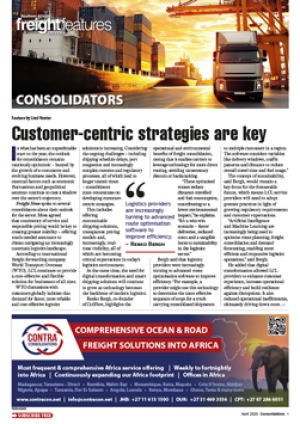The logistics world ticks by the microsecond, with every player investing extensively in innovations to beat the clock and take control. Most disruptive technologies reshaping the logistics ecosystem focus on providing operators with digital solutions to manage their variables and the overwhelming streams of data being generated. The industry has realised that the key to a sustainable future lies in meeting customers’ growing expectations for complete visibility.Consolidating tracking data and showing dots on a map is no longer enough, says Renko Bergh, co-founder of CtrlFleet. “It’s not just the location and the estimated time of arrival that matters but also parameters such as route efficiency and planned activities such as safety stopsand compliance with regulatory norms. Smart solutions now offer a comprehensive overview of the logistics landscape, supporting everything, from agile f leet planning and optimisation to pure exception management.”But, he warns, as logistics becomes more digitally interconnected, security must improve. “One of the biggest risks in supply chain management is duplication of content and unrestricted access to data across the network,” he says. “This creates two major threats: an increased risk of errors due to multiple stakeholdersinputting the same data from different sources and the potential for forgery through data manipulation. “Achieving full visibility across the supply chain and providing real-time information relies on extensive data capture at every stage of the process, making robust cybersecurity measures essential,” he says.According to Bergh, without strong security protocols, the risk of data errors, manipulation and cyber threats increases exponentially. The industry’s pursuit of speed and efficiency must therefore be balanced with measures to safeguard critical information. “The focus continues to shift towards solutions that enhance customer satisfaction, drive cost savings, improve efficiency and enable seamless collaboration. The ultimate game-changer, however, is time. Almost every innovation nowadaysaims to reduce delays at each stage of the logistics network without compromising accuracy or security.”With this in mind, staying ahead of the competition requires the support of a strong tech partner who has a clear plan to tame the time that’s ticking away, he says.Asked about emerging trends, Bergh says smart tracking continues to evolve, providing a complete view of the logistics landscape. “These systems support every aspect of transportation management, from agile f leet planning and optimisation to the assessment of vehicle capacity. However, the latest advancements in this area are far more intricate. They utilise sensors and radar technology for real-time tracking and tracing. Radars generate alerts based on vehicle and environmental parameters, capturing a complete spectrum of vehicular data. Advanced algorithms then correlate this information to calculate accurate delivery times and identify potential disruptions in real time.” LV

